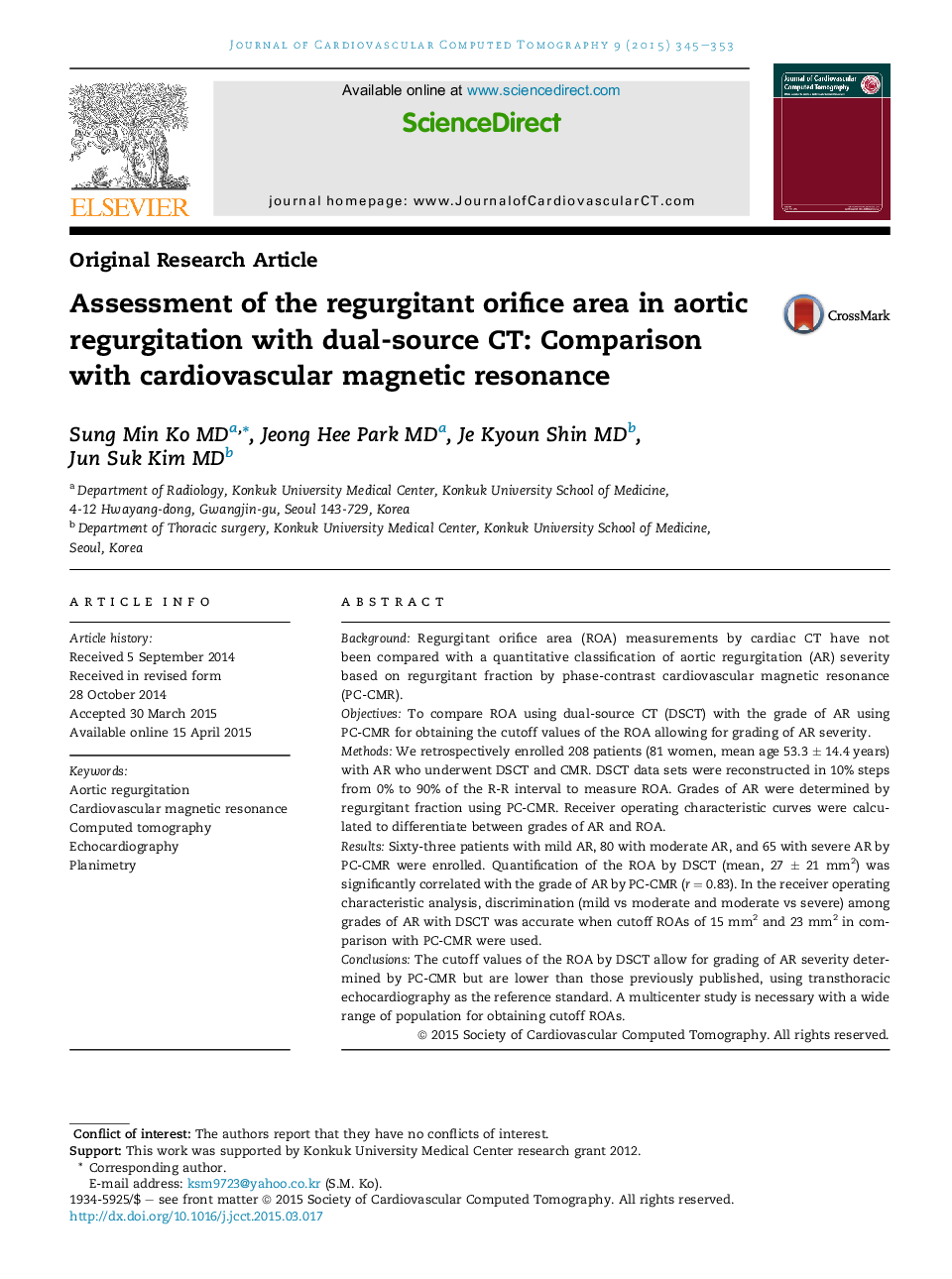| کد مقاله | کد نشریه | سال انتشار | مقاله انگلیسی | نسخه تمام متن |
|---|---|---|---|---|
| 2964310 | 1178685 | 2015 | 9 صفحه PDF | دانلود رایگان |

• Regurgitant orifice area (ROA) with CT is well correlated with the grade of AR severity.
• CT provides accurate measurement of ROA regardless of cusp calcification and prolapse.
• ROA with CT was significantly different but overlapped among patient groups.
• Cutoff ROAs obtained with CT allowed for discriminating among grades of AR.
BackgroundRegurgitant orifice area (ROA) measurements by cardiac CT have not been compared with a quantitative classification of aortic regurgitation (AR) severity based on regurgitant fraction by phase-contrast cardiovascular magnetic resonance (PC-CMR).ObjectivesTo compare ROA using dual-source CT (DSCT) with the grade of AR using PC-CMR for obtaining the cutoff values of the ROA allowing for grading of AR severity.MethodsWe retrospectively enrolled 208 patients (81 women, mean age 53.3 ± 14.4 years) with AR who underwent DSCT and CMR. DSCT data sets were reconstructed in 10% steps from 0% to 90% of the R-R interval to measure ROA. Grades of AR were determined by regurgitant fraction using PC-CMR. Receiver operating characteristic curves were calculated to differentiate between grades of AR and ROA.ResultsSixty-three patients with mild AR, 80 with moderate AR, and 65 with severe AR by PC-CMR were enrolled. Quantification of the ROA by DSCT (mean, 27 ± 21 mm2) was significantly correlated with the grade of AR by PC-CMR (r = 0.83). In the receiver operating characteristic analysis, discrimination (mild vs moderate and moderate vs severe) among grades of AR with DSCT was accurate when cutoff ROAs of 15 mm2 and 23 mm2 in comparison with PC-CMR were used.ConclusionsThe cutoff values of the ROA by DSCT allow for grading of AR severity determined by PC-CMR but are lower than those previously published, using transthoracic echocardiography as the reference standard. A multicenter study is necessary with a wide range of population for obtaining cutoff ROAs.
Journal: Journal of Cardiovascular Computed Tomography - Volume 9, Issue 4, July–August 2015, Pages 345–353